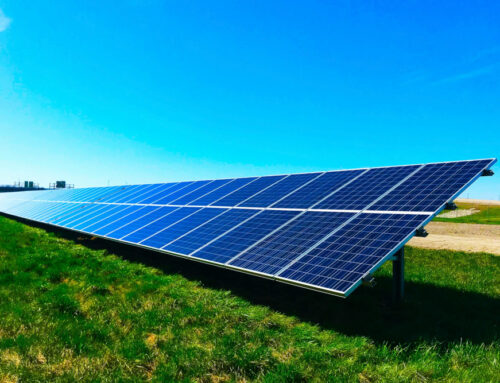Half of EU Power Now Renewable, But Harder Steps Ahead
October 1, 2024
In a long-awaited milestone, renewables claimed half of electricity generation for the first time in Europe during the first six months of the year. Claiming the next half or so of the bloc’s electricity mix will be harder. With Europe under pressure to both deliver on climate goals and strengthen its energy security, motivations are indeed strong to bring renewables well past the 50% mark into much higher double digits. Yet, the imperative is just as strong to ensure the higher volumes of intermittent renewables can become interconnected without compounding security and reliability risks.
Wind and solar photovoltaic (PV) capacity growth was a key factor in the recent 50% landmark — it grew fast enough to outpace increased electricity demand, demonstrating a structural increase rather than a seasonal variation. While notable falls in fossil fuel generation did occur in Germany, Italy, Spain, France and Belgium in the first half of 2024, the goal now is to crowd out fossil fuels to a higher degree. Doing so will require sharper tools and more coordinated planning, experts note.
“Sustaining the EU’s electricity transition at this pace will require dedicated policy focus to ease barriers to wind and solar integration,” said energy think tank Ember. “Adequate support on grid connections and other enablers of swift development will be needed to ensure that economic, security and climate benefits are delivered across Europe.”
Strong policy support, as evidenced in Germany with the renewed growth spurt of rooftop solar PV in recent years, demonstrates that government action can serve as the fundamental lever for integrating renewables into the power mix. The reverse is also possible, as exemplified by weak progress by the Dutch government to date in managing grid connection issues for solar PV, which is dampening the construction of new PV installations. Dutch bank ABN Amro claims there is a backlog of 3.54 gigawatts of renewable capacity awaiting grid connections. Installations and planned projects have outpaced the rate at which grid companies can connect new capacity to the distribution network in the country. The Netherlands perhaps serves as a cautionary tale for Europe as a whole when it comes to ensuring renewables can be connected to regional power networks fast enough to keep pace with growing pipeline volumes.
Hard Work
More specifically, wind and solar PV provided 30% of the EU’s electricity generation during the first half of 2024, overtaking fossil fuels’ 27%. When hydropower is included, which can fluctuate with reservoir volumes, all renewables combined provided 50% of the bloc’s electricity. In 13 EU member states that account for 70% of the EU’s electricity demand, wind and solar PV combined produced more electricity than fossil fuels, even without hydro.
While this is a major milestone, Brussels acknowledges the legwork needed to sustain the growing role of renewables in the electricity mix. Commission head Ursula von der Leyen recently appointed Denmark’s Dan Jorgensen — who is pro-electrification — as the bloc’s new energy chief. In a mission letter, von der Leyen tasks the new energy commissioner to “work to bring down energy prices for households and companies, produce more clean energy, upgrade our grid infrastructure and develop a resilient, interconnected and secure energy system.”
Lobby group WindEurope welcomed his appointment and the priority tasks for grids and interconnectors he’s been given. Jorgensen “needs to deliver on it, as electricity grids remain a main bottleneck for the expansion of Europe’s wind energy. More grids will help strengthen the EU’s electricity supply security and better integrate renewables into energy markets,” the group said in a statement.
Wider Thinking
Clean energy industry officials are also urging decision-makers to broaden the scope of their planning to accommodate higher renewable loads. For one, WindEurope said the EU’s commissioner-designate for industrial strategy, Stephane Sejourne, must ensure that the bloc’s industrial strategy supports the whole wind sector supply chain to meet the EU’s goals for wind energy capacity to reach 425 GW-500 GW by 2030, up from 225 GW today. Sejourne should also ensure that turbines continue to be made in Europe, the lobby group stressed.
Integrating renewable energy usage via other avenues, such as heat pumps, is seen as another priority to deepen uptake among Europe’s consumers. The European Heat Pump Association (EHPA) said the heating and cooling sector remains way off target to reach its 2030 targets and 2050 decarbonization goal. The sector “won’t meet the binding 2030 target of 42.5% until 2050,” EHPA warns while urging member states to “step up” and set more ambitious targets.
“This EU Commission is likely to be even more robust than the last in terms of implementation of the Green Deal,” the group says. “Key to their collective success and several other commissioners focused on trade, investment, security and competitiveness will be the ramping up the role of heat pumps powered by clean European electricity.”
Jason Eden is a reporter for Energy Intelligence, specializing in the energy transition. A version of this article originally appeared in EI New Energy.
Search
RECENT PRESS RELEASES
Related Post




